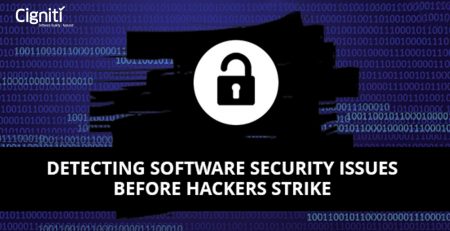An Overview of HIPAA Compliance Testing in Software Applications
Are you using any software that is related to an individual’s information? Anything that deals with patient data? Any applications or tools that deal with the data of a person or a group of people?
If your answer is yes, then this question is for you. How compliant is your company’s software with HIPAA while dealing with all those details?
Who and what is HIPAA?
The Health Insurance Portability and Accountability Act of 1996 (HIPAA) is a federal law requiring national standards to protect sensitive patient health information from being disclosed without the patient’s consent or knowledge. The US Department of Health and Human Services (HHS) issued the HIPAA Privacy Rule to implement the requirements of HIPAA. The HIPAA Security Rule protects a subset of the information covered by the Privacy Rule.
The Health Insurance Portability and Accountability Act (HIPAA) sets the protection standard for sensitive patient data. The prime focus of HIPAA is to protect the individual’s rights to understand and control how their information is being used while different entities are collecting it. The Privacy Rule allows important uses of information while protecting the privacy of individuals who need care and healing.
Under this category, Entities scrutinized and watched carefully are called covered entities.
They are
- Health care providers, regardless of size, whoever uses the electronic mode of healthcare data transmission for claims, benefit eligibility inquiry, referral authorization requests, and Other transactions for which HHS has established standards under the HIPAA Transactions Rule comes under this category.
- Insurance or Healthcare plan providers for health, dental, vision, and any provider who provides the prescribed drugs under the insurance and any health insurance sponsor or provider (a group health plan with fewer than 50 participants that is administered solely by the employer that established and maintains the plan is not a covered entity) to employees.
- Healthcare cleaning houses that receive the data from a third party with minimal information convert it to standard data with identifiable patients or vise versa.
- Any business associate or entity who deals with the individually identifiable information to provide services to the above-covered entities.
So, what are the main areas that fall under this compliance scope that should be tested to see if you and your organization are HIPAA compliant while using your software for processing individual or identifiable patient data?
Covered Entities
Five main areas should be covered under HIPAA compliance software
- User authentication
- Information disclosure
- Audit trail
- Data transfers
- Information on correct data use
The areas that should be assessed periodically are
- Security risk assessment
- Security standards assessment
- Asset and device audit for user authentication
- Physical site audit for the documentation verification of every process
- Privacy assessment and Standards Audit which will ensure patient’s privacy is being protected while using the data
- Device assessment audit
- HITECH Subtitle D audit, which is a self-audit conducted by entities to assess their preparedness for a data breach
- Vendor assessment for data handling and process alignment
Although these are the main areas that should be covered to assess any organization’s compliance, many things may be overlooked that sometimes pose a major penalty to pay for the failure.
Areas Under HIPAA Compliance
A detailed plan is required once the gaps are identified, and they should be addressed with a proper plan of action before the auditor comes and identifies this as a major area breaching the HIPAA. Sometimes, it could be a meaningful breach without documentation that can’t be proven.
It would be easy if all these were controlled and managed by a proper incident management system to closely track and update all the incidents, change controls, and deviations in one place. A thorough and periodic validation of system documents and change controls for the changes made to the system and the vendor will help to keep track of the health and status of the system all the time.
Even after taking all the measures and following all the rules from time to time, specific places and areas can slip from the list, which could become a wildfire regarding the data breach. Being compliant, whether for an organization or an individual, is not a certain rule to follow to achieve it directly. It comes with proper training on the guidelines published by HIPAA and practicing what we learn from the training. It is not impossible but not easy to achieve without following what we learn and understand.
Finally, it is not just HIPAA testing or HITECH… Every guideline focusing on the patient or healthcare data is acting more stringent in auditing the companies to protect individuals’ rights. So, the company has to self-check periodically and assess its level of compliance against all the regulatory guidelines that apply to it.
Conclusion
Investing in compliance verification and assessment services will avoid major penalties and help maintain audit readiness. Cigniti, as a leading testing and QA company, can help you with this activity with our best-qualified experts, who are well-trained and certified in handling compliance checks and audit support activities.
Need help? Schedule a discussion with our healthcare testing experts to learn more about HIPAA compliance testing in software applications.





Leave a Reply